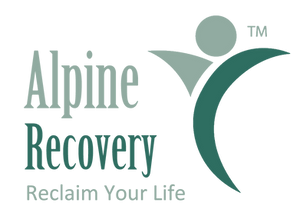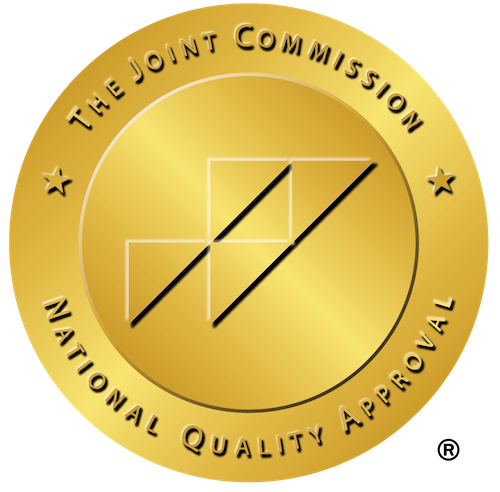How to Find a Treatment Facility in Washington
Choosing the right treatment facility in Washington can be a life-changing decision, whether for yourself, a loved one, or a patient. With over 70 treatment centers in Washington alone, ranging from residential programs to outpatient services, the options can feel overwhelming. Navigating this process with clarity and confidence is essential to setting the foundation for successful recovery. This guide will provide a step-by-step blueprint for selecting the best treatment facility in Washington for mental health challenges, substance abuse issues, or co-occurring disorders. From understanding your needs to navigating financial options, you’ll gain the tools to make an informed choice for the road ahead.
Understanding Your Needs
The first step in selecting a treatment facility in Washington is understanding the specific needs of the individual seeking care. This involves taking a close look at several factors, such as the type and severity of the condition, whether it’s a physical issue, mental health concern, or substance use disorder. Personal preferences also play a significant role—some individuals may prefer a facility closer to home, while others might benefit from a more private or secluded setting. Additionally, financial resources are a key consideration, as costs can vary widely between facilities, and understanding what insurance covers can help narrow down options. It’s also important to evaluate the level of support required, including whether the individual will need intensive care, outpatient services, or ongoing therapy after treatment.
Assessing the Condition
Is the need for treatment related to mental health, substance abuse, or both? Each condition requires tailored approaches. For example, someone seeking help for opioid addiction may benefit from a program specializing in Medication-Assisted Treatment (MAT), while individuals struggling with anxiety might focus on counseling and cognitive behavioral therapy. Collaboration is key—consult with healthcare professionals or therapists who can guide you intuitively based on medical history and personal circumstances.
Matching Needs with Treatment Type
Treatment facilities offer varying services, such as inpatient, outpatient, and hybrid programs. Understanding the severity of the condition and the level of care required can help narrow your search.
- Severe Cases: Look for fully immersive inpatient programs that provide around-the-clock medical care.
- Moderate Cases: Outpatient or intensive outpatient programs allow individuals to receive treatment while managing daily responsibilities.
This personalized assessment ensures the chosen facility aligns with specific recovery goals.
Researching Facilities
Once you’ve identified your needs, the next step is finding qualified treatment facilities in Washington that align with your specific requirements. Start by creating a list of what’s most important to you, such as the type of care, location, or cost. Take the time to thoroughly research centers that offer programs tailored to your situation, whether you’re seeking outpatient care, residential treatment, or specialized therapy options like trauma-focused counseling or dual diagnosis treatment. Look into the facility’s credentials, staff expertise, and reviews from past patients to ensure it provides the quality care you need to move forward.
Where to Look
- State Websites – Check government health websites for an updated list of licensed and accredited facilities. The Washington State Department of Health is a reliable starting point.
- National Databases – Resources like SAMHSA’s treatment locator and Psychology Today can help you filter options by location and specialty.
- Healthcare Providers – Primary care physicians and therapists often recommend established facilities within the state.
Accreditation Matters
Ensure the facility holds accreditation from reputable organizations such as CARF (Commission on Accreditation of Rehabilitation Facilities) or The Joint Commission. These accreditations are awarded only to facilities that meet rigorous standards of care, safety, and ethical practices, ensuring that patients receive high-quality treatment. Accreditation also reflects a commitment to continuous improvement and adherence to industry best practices, giving you added confidence in the facility’s ability to deliver effective and reliable care.
Key Factors to Consider When Choosing a Facility
Not all treatment centers are created equal, and choosing the right one can be a crucial step in your recovery journey. It’s important to carefully evaluate several key factors to ensure you find the best fit for your unique needs. Consider the types of programs offered—are they tailored to your specific challenges, such as inpatient, outpatient, or specialized therapies? Look into the qualifications of the staff to ensure you’ll be supported by experienced, licensed professionals. Don’t forget to research the center’s success rates and patient testimonials to get a clearer picture of their track record. Additionally, the overall environment plays a significant role—does it provide a safe, supportive, and comfortable space for healing? Taking the time to assess these aspects can make all the difference in achieving lasting recovery.
1. Location
- Close to Home: Provides easy and convenient access for family members, making it simpler to visit and stay connected, while also significantly reducing travel time and associated costs.
- Out-of-State: Offers a valuable opportunity for privacy and a fresh start, allowing individuals to step away from familiar, potentially triggering environments. This distance can create a supportive space for personal growth, healing, and a renewed perspective on life.
2. Treatment Programs Offered
Does the facility specialize in your treatment needs? Some centers target specific groups, such as adolescents, veterans, or women. Determine whether the offerings suit your profile and recovery goals.
- Programs: Confirm whether the center offers inpatient, outpatient, or a combination of both. Inpatient programs typically involve staying at the facility for intensive care, while outpatient programs allow individuals to receive treatment while maintaining their daily routines. Understanding these options can help you choose the right level of care for your needs.
- Specialized Treatment: Explore targeted options like dual diagnosis programs designed to address both mental health conditions and addiction issues simultaneously. These programs provide integrated care, offering tailored therapies and support to help individuals achieve lasting recovery and improved mental well-being.
3. Staff Qualifications
The caliber of professionals plays a crucial role in determining the quality of care provided. It’s essential to verify credentials, such as licensing and certifications, for therapists, psychiatrists, and counselors to ensure they meet professional standards. Additionally, consider their educational background, specialized training, and years of experience in the field. Teams with extensive experience often demonstrate higher success rates, as they are better equipped to handle various challenges and provide tailored solutions for individual needs. Taking the time to evaluate these factors can significantly impact the effectiveness of the care received.
4. Facility Philosophy
Each treatment facility in Washington operates with a unique approach to addressing addiction and recovery. Some adopt a medical model, emphasizing evidence-based treatments, medication, and clinical therapies to manage withdrawal and long-term recovery. Others prioritize holistic methods, incorporating practices like meditation, yoga, and nutrition to heal the mind, body, and spirit. Additionally, faith-based recovery programs center on spiritual growth and community support as key components of the healing process. It’s important to explore these options and choose a facility that aligns with your personal beliefs, values, and preferences to ensure a more effective and comfortable recovery journey.

5. Track Record and Success Rates
Ask about success rates, but don’t stop there—dig deeper to understand what metrics they use to measure success. Are they focusing on sustained sobriety, symptom management, or other long-term outcomes? These metrics can provide valuable insight into the facility’s true effectiveness and whether their approach aligns with your goals for recovery. Understanding how they define and track success is key to making an informed decision.
Questions to Ask During a Visit or Consultation
Before committing, visit the facility or schedule a consultation. Here are key questions to ask:
- What is the average patient-to-staff ratio?
- Does the treatment plan involve family or caregivers?
- Are aftercare services included post-discharge?
- How is progress measured during the program?
- What steps are taken in medical emergencies?
Financing Your Treatment
Cost is often a limiting factor when pursuing new projects or initiatives, but taking the time to explore different options and resources can uncover viable and creative solutions that fit within budget constraints. With careful research and planning, it’s possible to achieve goals without overspending.
Insurance Coverage
Many facilities partner with major insurance providers to help make treatment more accessible. It’s important to verify with your insurance provider whether inpatient and outpatient services are partially or fully covered under your plan. Coverage can vary depending on your specific policy, so taking the time to understand what’s included can help you avoid unexpected costs and ensure you get the care you need.
Medicaid/Medicare
Low-income individuals may qualify for government programs like Medicaid or Medicare, which often cover a range of behavioral health services, including therapy, counseling, and treatment for mental health and substance use disorders. These programs are designed to ensure that essential healthcare is accessible to those who might otherwise be unable to afford it, providing crucial support for mental and emotional well-being.
Flexible Payment Plans
Speak openly with facilities about financing options or sliding scale payments to make care more accessible. Many centers understand the financial challenges families face, especially when dealing with long-term care or unexpected expenses. They often offer flexible payment plans, reduced rates based on income, or other reasonable arrangements to help ease the burden. Don’t hesitate to ask about these options, as many organizations are willing to work with families to ensure they can access the support they need.
Services vs. Intuition
Weigh factual findings about facilities against your gut feeling. Look at the clinical aspects—are the facilities clean, well-maintained, and meeting necessary safety or healthcare standards? Then consider how the environment feels. Does the facility feel warm, welcoming, and supportive? Is there a sense of trust, empathy, and professionalism when speaking with staff? Pay attention to how the staff interacts with you and others—are they approachable and willing to answer questions? Prioritize facilities that not only meet clinical standards but also inspire personal confidence and a sense of comfort for you or your loved ones.
Preparing for Admission
Once the decision is made, follow this checklist to streamline the admission process.
- Complete necessary paperwork (medical history, insurance forms).
- Pack suitable clothing and personal items based on facility guidelines.
- Arrange travel logistics.
Clear communication with facility staff ensures a seamless transition.
What to Expect During Treatment
The treatment process typically includes:
- Admission: This stage involves conducting thorough assessments to understand the individual’s needs and creating a personalized treatment plan tailored to their specific goals and circumstances.
- Therapy: Participate in one-on-one counseling sessions, group therapy discussions, or other tailored interventions designed to address specific challenges, provide emotional support, and promote personal growth.
- Discharge Planning: Ensuring a smooth transition to life outside the facility by creating a comprehensive and personalized aftercare plan. This includes connecting individuals with ongoing support services, setting up follow-up appointments, and providing resources to maintain progress and prevent setbacks.
Aftercare and Ongoing Support
Recovery doesn’t end with graduation from a treatment program. Continued success relies on post-treatment care, which may include:
- Weekly support group meetings (e.g., Alcoholics Anonymous).
- Individual or family counseling.
- Outpatient sessions to reinforce coping mechanisms.
Washington offers numerous support resources, including community-based counseling centers and relapse prevention programs.
Conclusion
Choosing a treatment facility in Washington is more than just finding a location—it’s about creating a solid foundation for recovery and long-term well-being. Whether you’re a family member seeking help for a loved one, an individual ready to take the first step, or a healthcare professional guiding someone toward the right resources, taking thoughtful, informed steps can make all the difference. From personalized care plans to supportive environments that foster growth, the right facility provides the tools needed for a successful recovery journey. Don’t wait—contact our expert staff today by calling 1 (360) 658-1388 or click Alpine Recovery. Recovery, support, and hope are closer than you think, waiting to guide you every step of the way.



